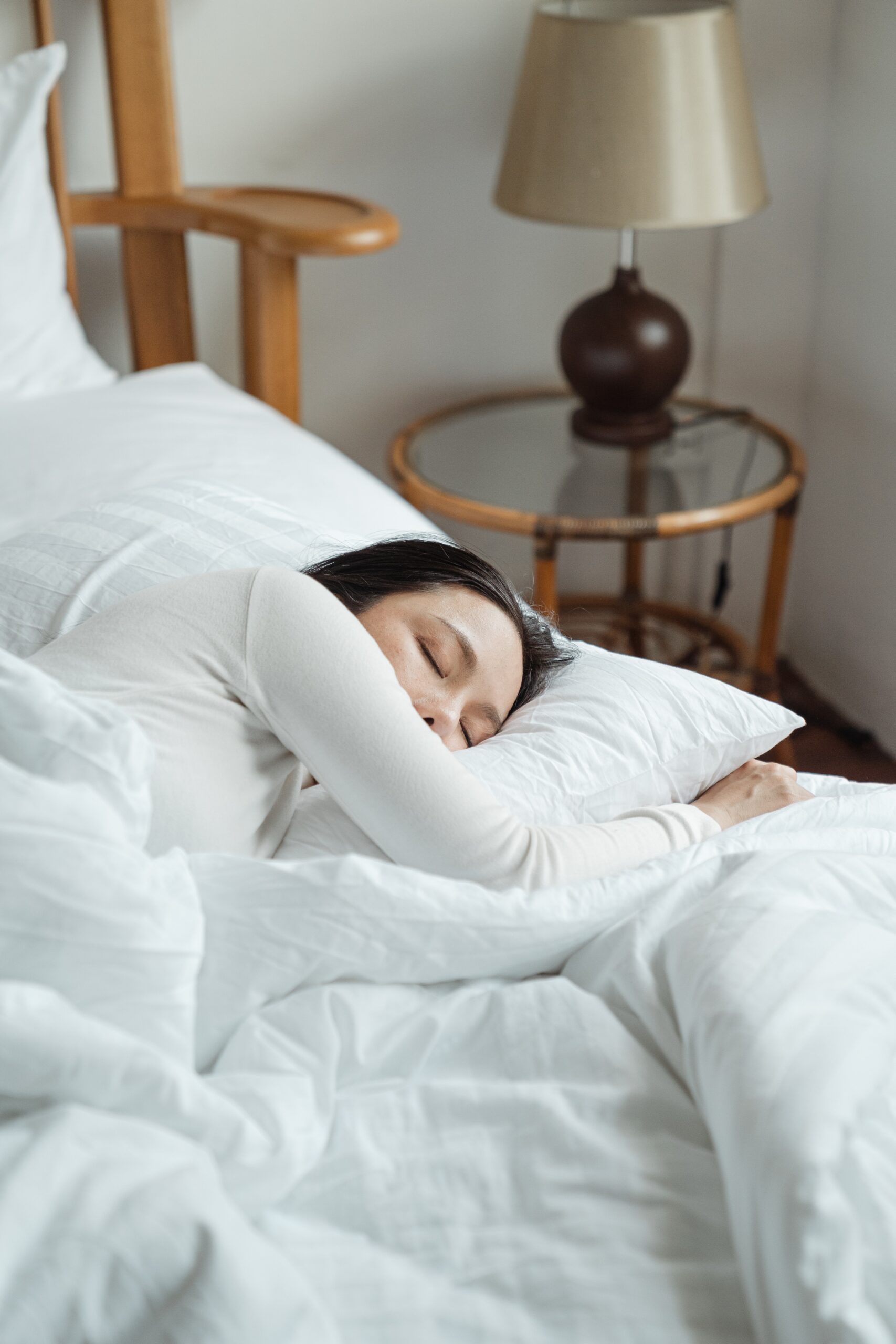Finding Restful Sleep Again: How CPAP Therapy Can Improve Your Sleep Quality
At a glance:
- Prevents Sleep Disruptions: CPAP therapy helps keep your airways open while you sleep, reducing or eliminating the frequent awakenings associated with sleep apnea.
- Improves Sleep Quality: By preventing the breathing stoppages characteristic of sleep apnea, CPAP allows for more restful, uninterrupted sleep.
- Reduces Daytime Sleepiness: Improved sleep quality at night can significantly reduce daytime sleepiness, a common symptom of sleep apnea.
- Improves Cognitive Functions and Mood: Better sleep quality can lead to improvements in cognitive functions such as memory and concentration, as well as improvements in mood.
- Improves Long-term Health: Effective treatment of sleep apnea with CPAP can help reduce the risk of related health issues like heart disease, high blood pressure, and stroke.
As someone who’s battled sleep apnea for years, I understand how daunting it can feel. The late-night wakefulness, the daytime fatigue, and not to mention the sudden immersion into an ocean of medical jargon – it can be overwhelming. I’ve been where you are, and I’m here to assure you that things can, and will, get better. I’m specifically going to talk about one treatment that’s been a lifesaver for me: Continuous Positive Airway Pressure (CPAP) therapy.
Sleep apnea, simply put, is a sleep disorder where breathing repeatedly stops and starts during sleep. It can result in poor sleep quality, frequent awakening, and if left untreated, it can take a serious toll on our health and daily life. One of the most effective treatments for sleep apnea is CPAP therapy.
CPAP is a small device that helps keep your airway open during sleep, thereby preventing apneas, or breathing pauses. It works by pumping air (at a pressure set by your sleep specialist) through a mask that you wear over your nose, or nose and mouth, as you sleep. I remember my first night with the CPAP – a mix of curiosity and nervousness, much like a child on the first day of school.
My journey with CPAP therapy wasn’t always smooth sailing. Choosing to start was difficult and the first few nights were tough. Getting used to the strange sensation of the mask on my face, the noise of the machine, the initial claustrophobia – it was a challenge. But I persevered, spurred by the promise of a good night’s sleep. Over time, I experimented with different types of CPAP machines and masks, finally finding the ones that suited me best.
The transformation that CPAP therapy brought to my sleep was nothing short of a miracle. As the nights passed, I started sleeping deeper and waking up fewer times. The chronic fatigue that shadowed my days started lifting, replaced by a newfound vitality. Even my mood improved, and my ability to focus got a boost. Let me tell you, being able to enjoy a mid-afternoon book without fighting droopy eyelids is a simple pleasure that I had almost forgotten about!
Now, CPAP therapy does come with its set of challenges, and it would be unfair if I didn’t mention them. Some of the common ones include discomfort wearing the mask, dryness in the nose and mouth, and a feeling of claustrophobia. I faced them too, but rather than let them deter me, I found ways around them. Tips from my sleep specialist, advice from fellow apnea warriors, and a bit of ingenuity helped me overcome these hurdles. Whether it was trying different mask types for comfort, using a CPAP with a built-in humidifier to prevent dryness, or gradual desensitization techniques to combat claustrophobia, there are solutions available.
What’s more, treating sleep apnea effectively with CPAP therapy can have significant benefits for long-term health. Untreated sleep apnea can lead to high blood pressure, heart problems, and other health issues. Since I started CPAP therapy, my blood pressure readings have become more consistent and overall, I feel healthier. The incessant worry about potential health problems related to sleep apnea has eased.
While CPAP therapy has been a cornerstone in my sleep apnea management, I’d be remiss if I didn’t acknowledge the importance of lifestyle modifications and other treatments. Weight management, avoiding alcohol before bedtime, positional therapy – all played their part in my journey towards better sleep. These changes worked in synergy with my CPAP therapy, enhancing its effectiveness.
Looking back on my sleep apnea journey, I can confidently say that CPAP therapy has been a game-changer. It brought restful sleep back into my nights, vitality into my days, and most importantly, gave me control over my life again.
If you’re grappling with a sleep apnea diagnosis and considering CPAP therapy, remember that you’re not alone. It might feel like a daunting change, but it is one that can bring incredible improvements to your sleep and your life. It’s okay to feel overwhelmed, to have concerns. Take your time, reach out for support, ask questions, and slowly, you’ll navigate your way through, just like I did. Remember, the goal is better, healthier sleep, and with CPAP therapy, it is absolutely attainable. Here’s to a future of restful nights and energetic days!
The Science Behind CPAP Therapy
Continuous Positive Airway Pressure (CPAP) therapy, as the name suggests, works by maintaining a continuous stream of positive pressure air into the respiratory system. But what does this mean, and how does it help those with sleep apnea?
Sleep Apnea and Breathing Interruptions
To understand how CPAP works, we need to understand what happens during sleep apnea. Sleep apnea, particularly the most common form known as obstructive sleep apnea (OSA), is characterized by repeated interruptions in breathing during sleep. These interruptions occur when the muscles in the throat relax and cause a blockage in the airway. This blockage leads to an apnea or hypopnea event – a complete or partial pause in breathing, respectively.
Positive Pressure: The Heart of CPAP
This is where CPAP steps in. CPAP devices provide a steady flow of air that creates enough pressure to keep the throat tissues from collapsing, thus ensuring an open airway. The positive pressure is generated in the machine, travels through a hose, and is delivered to the airways through a mask worn by the user.
Adjusting the Pressure
CPAP machines are typically adjustable to cater to the individual needs of the user. The pressure settings are generally determined during a sleep study to ensure it’s sufficient to prevent airway collapse during sleep. Modern CPAP machines can automatically adjust the pressure as needed.
The Role of the Mask
The CPAP mask plays a crucial role in the delivery of the pressurized air. The mask, which can cover just the nose or both the nose and mouth, must maintain a good seal to ensure the air pressure remains constant and effective.
Improved Oxygenation and Better Sleep
By continuously keeping the airway open, CPAP prevents apnea and hypopnea events, allowing for uninterrupted sleep. This uninterrupted sleep helps maintain stable oxygen levels in the blood, preventing the harmful effects of oxygen desaturation that occurs during sleep apnea.
In summary, the science behind CPAP therapy is based on the simple principle of using air pressure to keep the airway open. However, its effects on sleep quality, daily functioning, and long-term health can be profound. By understanding how CPAP works, we can appreciate its role in managing sleep apnea and improving the lives of those affected by this condition.




